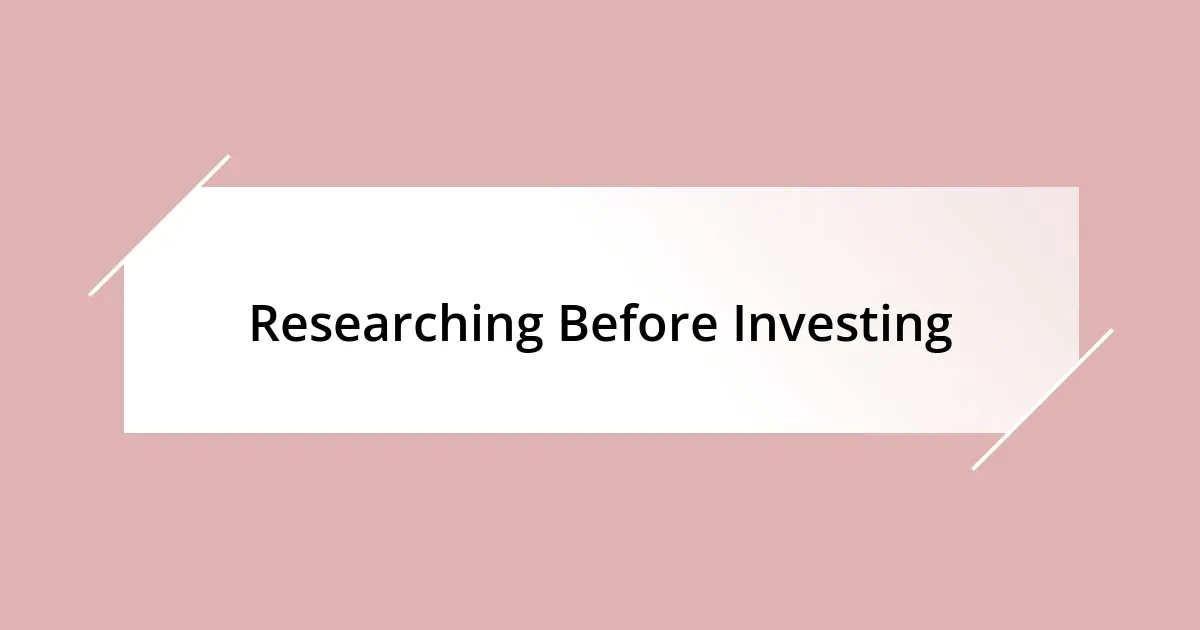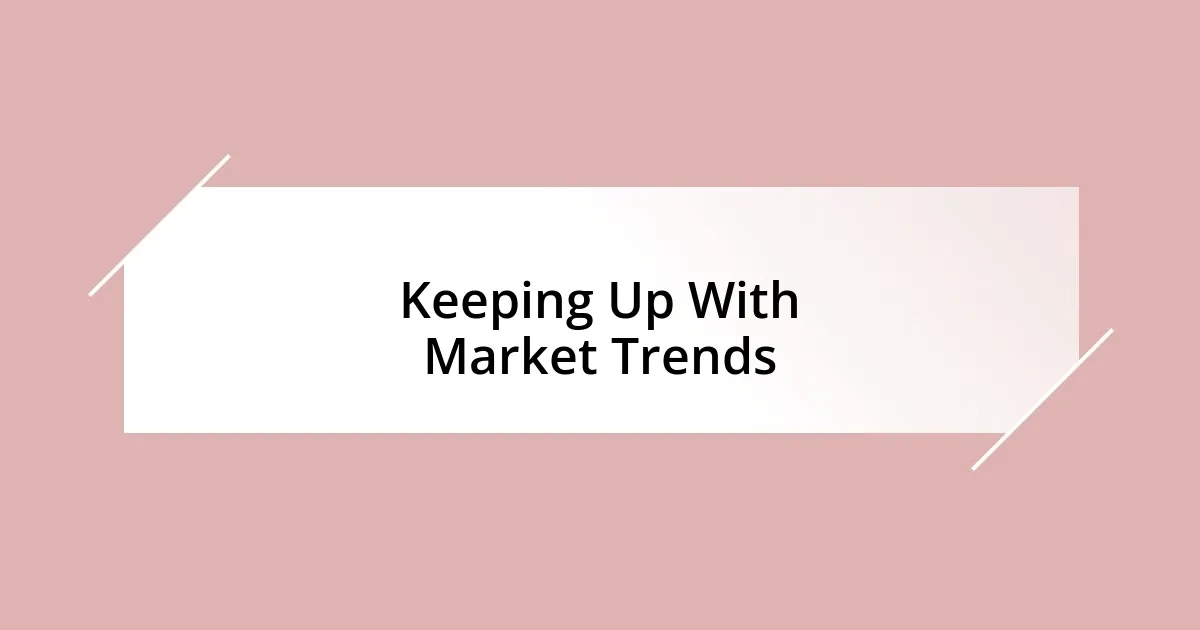Key takeaways:
- Importance of thorough research: Understanding project fundamentals, team background, and community engagement is crucial before investing in crypto.
- Setting realistic investment goals: Focus on achievable milestones rather than high expectations to maintain motivation and reduce stress.
- Use secure wallets: Transitioning to hardware wallets and regularly backing up data enhances security against hacks and losses.
- Diversification is key: Spreading investments across different assets and sectors mitigates risk and cushions against market volatility.

Understanding Common Crypto Mistakes
One of the biggest mistakes I’ve made in the crypto space was ignoring the importance of research. Early on, I impulsively bought into a coin simply because a friend recommended it. Looking back, I realize that without understanding the project’s fundamentals and its real-world application, I was essentially gambling with my money.
Another common error is falling victim to FOMO—fear of missing out. I vividly remember the adrenaline rush when I saw others making profits, and I hastily invested in a trending token. It turned out to be a volatile ride, leading to anxiety as prices plunged. Why didn’t I stop to evaluate whether I truly believed in that project?
I also learned the hard way about the significance of secure storage options. In my initial days, I thought keeping my coins on an exchange was convenient, but a hack ended up costing me dearly. Did I really want to risk my investments for convenience? Now, I always use hardware wallets and prioritize security, ensuring peace of mind as I navigate this complex landscape.

Researching Before Investing
Researching before diving into a crypto investment has become my cardinal rule. I remember a time when I skimmed over crucial details just to get in on a hot opportunity. My eagerness blinded me, and ultimately, I learned the hard way that a bit of extra effort in research can save you from financial heartache.
Here are some key areas I focus on during my research:
- Project Fundamentals: Understanding the technology, use cases, and goals of the project.
- Team Background: Looking into the credentials and track record of the development team.
- Community Engagement: Assessing the strength of the community behind the coin; active communities often suggest genuine interest.
- Market Trends: Analyzing past performance and market movements to predict future opportunities.
- Security Measures: Identifying how the project protects users’ funds and personal information.
Each time I invest, I remind myself that solid research creates a more informed decision-making process, reducing the chances of repeating past mistakes. More than just numbers, it’s about understanding the story behind the investment.

Setting Realistic Investment Goals
Setting realistic investment goals is often the cornerstone of a successful crypto journey. I remember when I first started; I set my expectations too high and aimed to double my investment within weeks. That dream quickly turned into a reality check when market fluctuations taught me a valuable lesson about patience and stability. By adjusting my goals to focus on gradual growth, I found myself much more at peace with my investments.
In my experience, it’s essential to define what success looks like for you personally. For some, it may mean earning enough to cover personal expenses, while for others, it might be a long-term wealth-building strategy. I learned to set SMART goals—Specific, Measurable, Achievable, Relevant, and Time-bound. When I started to implement this framework, it completely transformed how I approached each investment.
Reflecting on my journey, I found it helpful to break down my goals into smaller milestones. Instead of fixating on a massive return, I celebrated each 10% gain or successful trade. This approach kept me motivated and encouraged me to stay engaged with my investments without feeling overwhelmed. Remember, every small step can contribute to larger achievements in the long run.
| Investment Goals | Characteristics |
|---|---|
| Unrealistic Goals | High expectations without a plan |
| Realistic Goals | Based on research and a clear strategy |

Using Secure Wallets Effectively
Using secure wallets effectively has been a game-changer in my crypto journey. I vividly remember the panic I felt after realizing that my funds were stored in a less secure wallet, exposed to potential threats. Since then, I’ve switched to hardware wallets for long-term storage, which, for me, has provided peace of mind. Have you ever wondered how much your mental well-being is worth? I find it invaluable.
Another crucial tip I’ve learned is the importance of backing up wallet data. The first time I lost access to my wallet due to a simple password mishap, I felt like I had been hit by a train. Now, I take the extra step to create multiple secure backups. Not only do I store one offline, but I also have secured copies in separate locations. If I could offer you one piece of advice, it would be never to underestimate the power of a backup.
I also make it a habit to regularly check for software updates on my wallet. I recall a time when I neglected this, and soon after, I became aware of a security vulnerability that could have jeopardized my investments. Keeping my wallet software up to date feels like putting on armor against ever-evolving threats in the crypto space. So, ask yourself, are you protecting your assets as best as you can? I believe that frequent updates are a small price to pay for the security they provide.

Diversifying Your Crypto Portfolio
Diversifying your crypto portfolio has become essential in my investment strategy. I remember the early days when I concentrated most of my holdings in just one or two coins. After a steep decline in value, I felt that gut-wrenching fear of losing it all. Since then, I’ve learned the value of spreading my investments across different assets. By doing this, I’ve cushioned my overall exposure to market volatility, allowing me to breathe a little easier.
Have you ever thought about how many digital currencies are out there? With thousands of options available, it’s tempting to throw all your eggs in one basket. However, I’ve found that having a mix—like some majors and a few altcoins—helps balance the risks and rewards. I often reflect on my experience with Bitcoin, Ethereum, and some smaller tokens. When the market dips, it’s comforting knowing that not all my assets are affected equally.
I also prioritize investing in different sectors within the crypto space. For instance, I keep some of my assets in DeFi projects while also exploring NFTs and blockchain technology. This strategy has opened my eyes to exciting opportunities while mitigating potential losses. I remember the excitement I felt when one of my DeFi investments started to yield returns, making me realize the importance of not just diversifying across coins but also across sectors. It’s all about creating a safety net that offers both growth potential and security.

Keeping Up With Market Trends
Staying updated on market trends is like catching the rhythm of a dance—you simply can’t afford to miss a beat. I remember one week when Bitcoin prices surged unexpectedly; I wasn’t prepared because I had let weeks go by without checking the news. That oversight cost me potential gains. From that point, I committed to daily briefings, often while sipping my morning coffee. It’s amazing what a difference a few minutes can make in today’s fast-paced crypto environment.
Sometimes, I even set up alerts for specific coins or market changes. Have you ever experienced the rush of seeing your notification ping just as a market trend begins? It’s exhilarating! These little nudges push me to act quickly, whether it’s buying, selling, or simply diving deeper into research. Plus, by following a variety of sources—like blogs, podcasts, and social media—I gain a well-rounded view of the market. This broader perspective keeps me grounded and less prone to hasty decisions driven by fear or hype.
Reflecting on my journey, I’ve learned to look beyond the numbers and charts. Embracing market sentiment has reshaped how I position my investments. I recall a time I became too focused on technical analysis and didn’t account for a major regulatory shift. That made me realize the importance of keeping my ear to the ground. With sentiment analysis tools and social listening software, I’ve found a way to gauge the pulse of the crypto community. After all, navigating the market isn’t just about numbers; it’s about understanding the people and narratives behind those movements.

Learning From Your Experience
Learning from experience has been pivotal in shaping my crypto journey. Early on, I had my fair share of blunders. One time, I rushed into an investment after hearing a friend rave about a new token. Excitement clouded my judgment, and, as luck would have it, that token plummeted within days. It was a harsh reminder that relying solely on others’ opinions can lead to costly mistakes. Now, I take the time to research and trust my instincts more; it’s truly liberating.
I often find myself reflecting on pivotal moments during my crypto learning curve. Like the time when I ignored my gut feeling to hold onto an asset just a bit longer. The day after I sold, it shot up dramatically. That feeling—frustration mixed with regret—stayed with me. Since then, I’ve learned to balance informed decision-making with my own intuition. Have you ever felt a similar twinge of regret that pushed you to improve? It’s those experiences that are teaching tools in disguise.
As I navigate through the ups and downs, I also keep a journal to track my emotional responses and decisions. This practice has revealed patterns I wouldn’t have noticed otherwise. For instance, I’ve discovered that I tend to make more impulsive choices during market highs. Simply acknowledging this has made me pause and reassess my strategies. I’ve grown not just as an investor, but as someone who understands their emotional triggers. Learning from my past mistakes has not only saved me money but provided invaluable insight that guides my current and future decisions.














